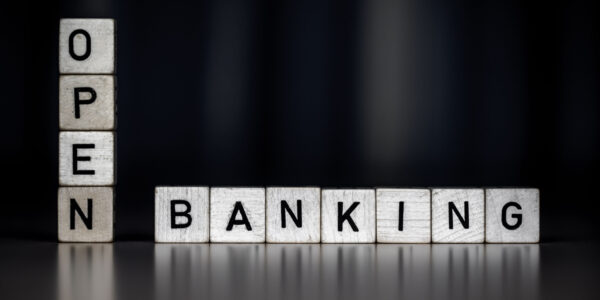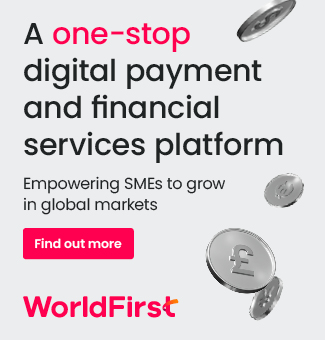Open banking allows users to share their financial information with authorised third-party providers in exchange for efficient and personalised money management services.
This is a new industry, but since 2018, it has shown immense growth and innovation in the banking sector, especially in the UK. In fact, as more customers and businesses adopt open banking, its global market value is expected to reach $43 billion by 2028, a compound annual growth rate (CAGR) of 24.4% since 2021.
Key takeaways
- Open banking enhances cash flow management by providing real-time insights into past and future transactions.
- Businesses can access new funding opportunities through open banking, improving their chances of securing loans.
- Seamless payment processes via open banking significantly boost customer satisfaction and conversion rates.
With this new banking trend growing rapidly, we discuss below exactly what open banking is and how it works. We also explore its business benefits, and highlight some of the top open banking apps for small businesses. Let’s get started.
What is open banking?
Open banking is a banking system that allows financial institutions (like budgeting apps and cash flow management tools) to gain read-only access to their user’s financial data. This could be their bank balance, transaction history, or savings. Access can only be gained with the user’s explicit consent, and it can be withdrawn at any time.
- Should I open a business bank account for my company?
- Opening a business bank account in the UK as a non-resident
By sharing financial data, open banking allows financial service providers to understand their client’s habits and needs, and offer them unique products and solutions.
What can open banking be used for?
Depending on the provider, there are many ways for both customers and businesses to use open banking. For example, many people use it for quicker and smoother online shopping experiences, that eliminate the need to enter their personal payment card details.
Another use for open banking is to get personalised financial services such as saving, budgeting, or investing advice. Many open banking providers can analyse customers’ bank balances and spending habits to offer tailored money management solutions.
There are also plenty of ways for businesses to use open banking. For example:
1. Accountancy and tax
If you own an accountancy firm, you could use open banking to access your clients’ bank statements for audit, run automated audit tests, or send and receive faster audit confirmation requests.
If you’re self-employed or file an annual Self Assessment tax return, open banking can help you pay your tax bill online or easily manage your expenses and invoicing.
2. Cash flow
Manage your cash flow easily by seeing your past, current, and future business transactions.
3. E-commerce payments
Open banking allows you to receive payments from your customers quicker than traditional methods, with reduced processing fees. You can also implement a rewards system for your customers with open banking, or make quick and easy international payments.
4. Loans and financing
Access your customers’ credit reports via open banking, or share your company’s health data with lenders to source a business loan.
How does open banking work?
Open banking services are carried out through Application Programming Interfaces (APIs). An API is integrated software that safely and seamlessly connects customers’ data with an authorised third-party provider. In other words, APIs allow financial providers (for example, banks, budgeting apps, accountants, etc.) and open banking providers to ‘talk’ to each other.
Here’s how open banking works at a glance:
Step 1: Customer authorisation
The financial provider must request consent to access a customer’s details. This is normally done when the customer signs up for the provider’s services. Then, a request is sent to their bank, which processes and shares the customer’s financial information.
Step 2: Data sharing
Once consent is given, the customer’s data is safely shared through an API.
Step 3: Transaction request
As well as securely accessing the customer’s information, the financial provider can also use open banking APIs to send transaction requests. This allows the customer to approve payments without logging into the mobile banking app.
Unlike traditional banking (e.g. direct debit or credit cards), open banking is safer and quicker, as there is no need to enter any payment details. The middleman (bank) is removed, allowing the API to connect directly to the right financial data.
Is it safe?
Open banking uses several security measures to make sure that customer’s data is safe and shared securely. Some of the main protective features include end-to-end encryption, multi-factor authentication, and access controls that allow customers to choose the information they share.
Once data sharing is permitted, third-party providers gain read-only access to customer’s information. This means that they can simply view the data and are restricted from making any changes.
Finally, open banking tools are regulated by the Payment Services Directive 2 (PSD2) in Europe, and the Financial Conduct Authority (FCA) in the UK.
The benefits of open banking for small businesses
Some of the key benefits for SMEs are:
- New insights: Open banking APIs can help you gain access to a wide range of new and insightful financial data to personalise your products and services.
- Stay competitive: Information such as payment processing and financial analysis is normally only available to larger corporations, so having access to new data through open banking can help you stay competitive and stand out from the crowd.
- New management solutions: Open banking technology can help you find new and improved ways of managing your company’s cash flow.
- Access to new funding: Many business owners are apprehensive about applying for a business loan. Open banking allows alternative lenders to examine your company’s financial health and offer new funding avenues.
- Instant payments: There’s no need to wait for a debit card transaction to transfer funds to your account. You can receive instant payments from your customers through open banking APIs.
- Reach a wider audience: Open banking allows you to reach customers who don’t use other forms of banking.
- Reduced fees: Instant payment transactions are normally cheaper than online card transactions, so you could find substantial cost-cutting opportunities with open banking services.
- Improved customer experience: A seamless and simple check-out process with multiple options significantly improves your customer journey and satisfaction, which can increase your conversation rate.
Are there any risks?
While there are numerous benefits, there are also a few things to consider before deciding if open banking is right for your business.
Open banking technology is still developing, so, first and foremost, you should do your research and use an authorised open banking service to ensure responsible and secure data sharing for your customers. Using an established provider also helps avoid any potential data breaches or hacking into your company’s systems or sensitive information.
You may also want to consider if open banking is suitable for your target audience. For example, if a potential customer is financially vulnerable, they may feel anxious about sharing their information digitally, or if they’re not particularly tech-savvy, they may feel distressed about the lack of human interaction. If you offer your customers open banking solutions, some may need extra support with using the technology or reassurance on the safety of data sharing.
Top providers for small businesses
If you think open banking might be suitable for your business, it’s important to do your homework. There are many established open banking firms in the UK, such as:
1. Yapily
Yapily offers a wide range of open banking services, such as quick and secure payments, instant profile validation, access to real-time financial data, and more. They operate on a worldwide scale with over 2,000 banks and financial institutions across 19 countries already on board.
2. Tink
Founded in 2012 and part of Visa since 2022, Tink connects with over 6,000 major banks across Europe. Tink offers a range of payment, account, risk assessment, and financial management services with one API.
3. Bud
Originally a financial well-being app, Bud now focuses on bringing growth opportunities to businesses through financial data. They have an impressive portfolio of both clients and investors, which features HSBC, and they offer a specific developer portal for SMEs to access their services.
4. Plaid
Plaid is a world-leading open banking platform with established brands on board like Cleo and Wise. Their API offers services such as payment initiation, categorised data, and real-time account balances.
5. Moneyhub
Awarded ‘Open Banking Provider of the Year 2022’, Moneyhub operates across 37 countries and connects thousands of financial institutions with customers without the need for a card.
Wrapping up
Open banking is a groundbreaking way to safely connect with your customer’s data and offer them tailored services that are unique to them.
Your business could benefit from several open banking features, such as receiving instant payments from customers, driving repeat business with an improved and seamless user experience, and accessing new funding opportunities.
If you think open banking services could be right for your company, it’s important to do your homework and make sure you partner with trusted, established, and secure providers.
We hope you have found this guide on open banking educational. If you have any comments, please let us know below, or get in touch if you have any questions.
Please note that the information provided in this article is for general informational purposes only and does not constitute legal, tax, or professional advice. While our aim is that the content is accurate and up to date, it should not be relied upon as a substitute for tailored advice from qualified professionals. We strongly recommend that you seek independent legal and tax advice specific to your circumstances before acting on any information contained in this article. We accept no responsibility or liability for any loss or damage that may result from your reliance on the information provided in this article. Use of the information contained in this article is entirely at your own risk.












Join The Discussion